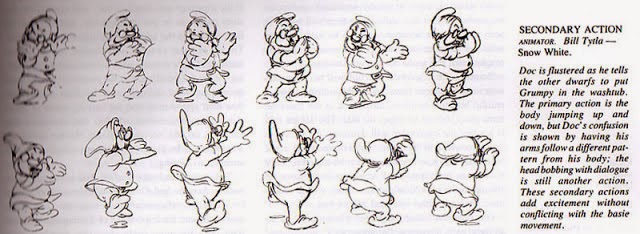Adding secondary actions to the main action gives a scene more life, and can help to support the main action. A person walking can swing his arms or keep them in his pockets, he can talk or whistle, or he can show emotions through facial expressions.
The important thing about secondary actions is that they emphasize, rather than take attention away from, the main action. If the latter is the case, those actions are better left out. In the case of facial expressions, during a dramatic movement these will often go unnoticed. In these cases it is better to include them at the beginning and the end of the movement, rather than during.



No comments:
Post a Comment